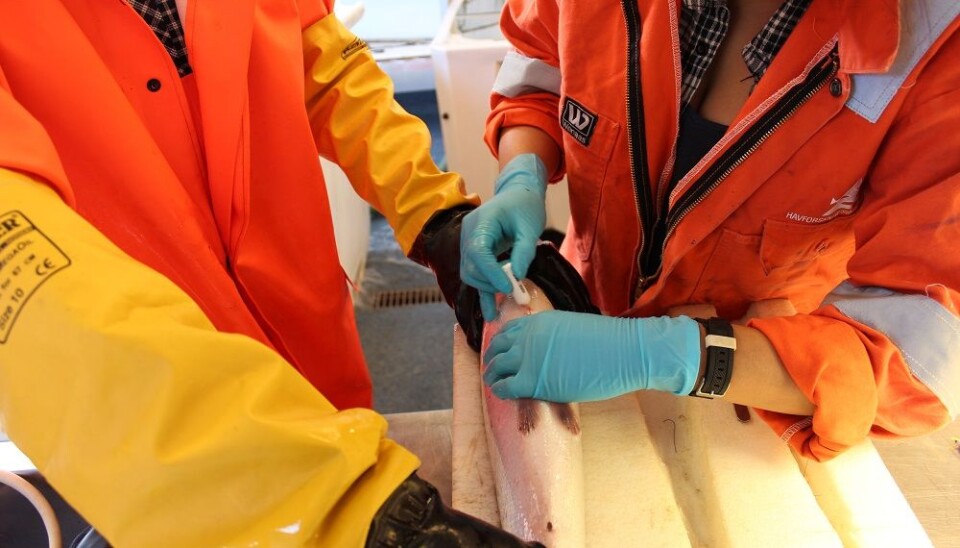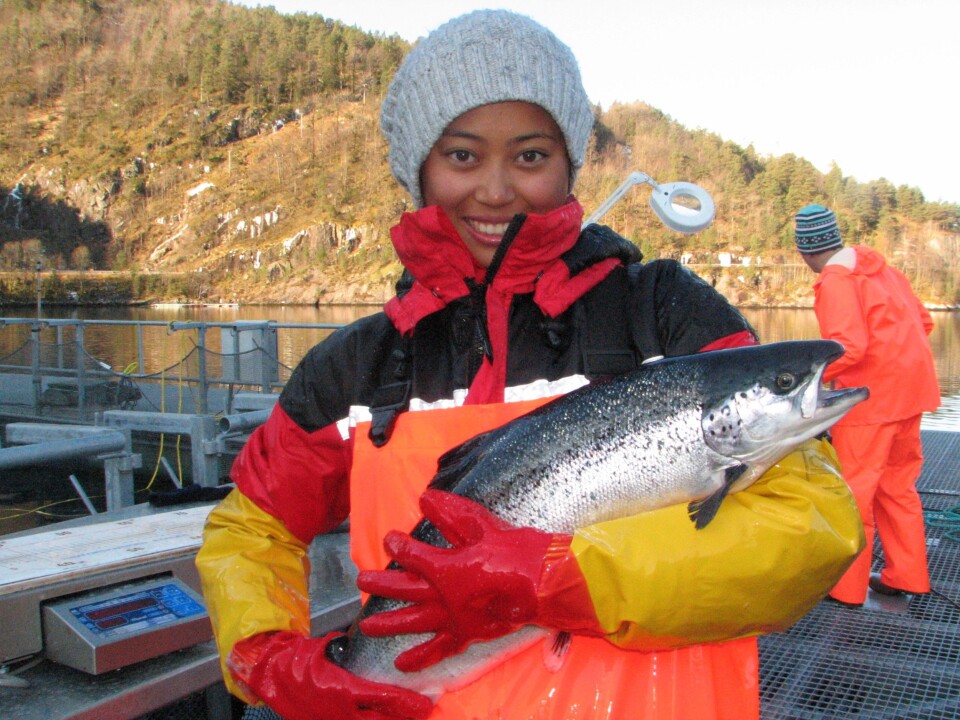This article was produced and financed by Institute of Marine Research

Farmed salmon with lice prefer the deep
At night, salmon with heavy lice infestations swim deeper than the rest of the shoal. For the first time, this shows that salmon might have a natural behaviour that prevents new sea lice infestations.
When an animal acquires numerous parasites on itself, it often its behaviour, and it appears that farmed salmon do so as well when they have high levels of sea lice.
“During the day, all of the fish swam deep in the cage, but at night we noticed that the fish that had the most lice chose to reside deeper than those with less lice, and these fish completely avoided being in the top 4 meters” states Samantha Bui, who has taken a doctorate degree on this topic.
Towards the light
Until the eggs of a louse hatch, they are firmly attached to the female louse. When the microscopic larva emerges from the egg, it develops while drifting with the current. When it reaches the stage wher it can attach itself to a salmon, it shows a movement pattern where it swims towards the light and surface while still being carried by the current. During this stage, the lice stay in mostly in the upper meters of the water.
“The reason why the salmon with high lice levels stayed away from the top meters is probably because this is the zone that contains the greatest risk of getting new lice”, says Bui.

This indicates that the salmon with high lice loads actively choose to avoid the parts of the water column where they would acquire most infestation, unlike a salmon without lice who chooses swimming depths that have the optimum temperature and light.
Not sure why
Bui emphasises that they cannot say exactly why the salmon that had lice chose to swim deeper, but they can say that it looks like it has the benefits of avoiding further infestation by lice.
“This is the first time that we have seen an innate response in parasitised salmon” she says, while highlighting the need to improve knowledge of the vertical distribution of infective sea lice in the water.
The experiment was conducted at IMR’s research station in Austevoll alongside a larger project with snorkel cages. Salmon were kept in cages in the same manner as on commercial farms. The scientists used tags that registered the swimming depths of individual fish, and salmon included in the experiment had zero to 18 lice.
Scientific links

- Bui et al. 2016:Sea lice infestation level alters salmon swimming depth in sea-cages. Inter-Research Aquaculture Environment Interactions.
- Stien et al. 2016: ‘Snorkel’ sea lice barrier technology reduces sea lice loads on harvest-sized Atlantic salmon with minimal welfare impacts. Aquaculture.






























